Bioscience in a box
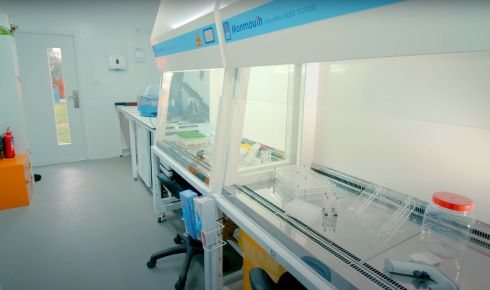
23rd February 2024
State-of-the-art shipping container laboratories once used for rapid COVID-19 testing are now helping support the exploration and study of the planet’s biodiversity, writes Tom Ireland
At Radazul Marina, on the eastern coast of Tenerife, two 40ft steel containers were recently unloaded on to the docks that were unlike any other cargo coming and going from this busy port. These enormous blue steel boxes house two self-contained molecular biology laboratories, which will play a central role in an ambitious mission to explore and catalogue ocean life in this region.
What’s more, they have been repurposed from their past life as ‘pop-up’ COVID-19 testing labs. Developed in 2020, they were the first fully functional laboratories that could be deployed anywhere in the world ready to use.
By 2021 the biosafety level 2+ containers were processing 4,000 PCR tests a day in locations lacking research facilities, including Jersey and rural Pakistan. Later in the pandemic, the labs shifted from testing to sequencing individual samples to better understand the transmission of cases and evolution of the virus.
 The enormous blue steel boxes house two self-contained molecular biology labs
The enormous blue steel boxes house two self-contained molecular biology labsThe two modular laboratories have only needed moderate modification to assist the upcoming Ocean Census Macaronesia Expedition, which aims to explore the rich yet largely uncharted marine environments around the Canary Islands and beyond (several potential new species have already been found, including a strangely primitive scaled mollusc).
The labs house stations for processing, imaging, preserving and analysing samples, and will undergo further development to enable a comprehensive suite for cybertaxonomy, including Oxford Nanopore sequencing capabilities.
Ocean Census, a global alliance of research institutes and philanthropic and governmental organisations, has both technical dive teams and a submersible working in parallel to collect samples of Canary Island marine life from up to 100m and 300m deep respectively.
The newly installed shipping containers will enable its scientists to quickly perform both traditional and molecular taxonomy of all samples coming in, which can be combined with geolocation, habitat and environmental data of each sample to create a ‘digital twin’ or ‘cybertaxonomy’ of the local ocean.
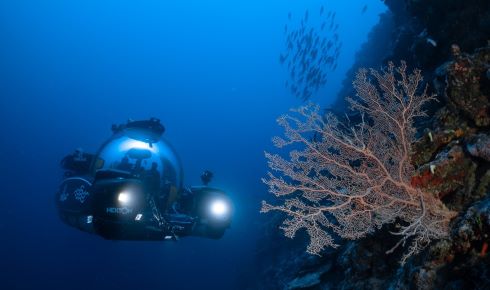 A submersible helps collect samples of marine life from up to 300m deep
A submersible helps collect samples of marine life from up to 300m deepThe wider Ocean Census project aims to identify 100,000 new species over the next decade, and create next-generation genetic reference libraries for marine life that can help identify ocean conservation priorities, improve environmental DNA biomonitoring, and support ocean governance.
Other Ocean Census expeditions have sampled the Johnston Atoll in the middle of the Pacific, home to some of the most pristine marine ecosystems on Earth, and the methane-rich seafloor of the Barents Sea in the Arctic.
Biotech for biodiversity
Helene Steiner, CEO of OpenCell, the organisation that created the shipping container labs, says the collaboration is the first of hopefully more efforts to redirect pandemic-related infrastructure toward urgent environmental concerns.
“During the global pandemic we united on a global scale to use our skills and knowledge to address one of humanity’s most critical crises,” she says. “Now we are applying this expertise in collaboration with Ocean Census to tackle another pressing emergency – the biodiversity crisis.”
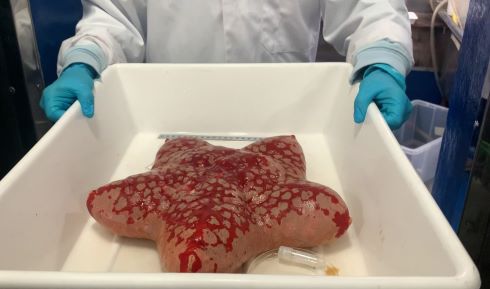 The wider Ocean Census project aims to help identify ocean conservation priorities and improve environmental DNA biomonitoring
The wider Ocean Census project aims to help identify ocean conservation priorities and improve environmental DNA biomonitoringThe key challenge Ocean Census needed to address was having sample processing facilities as close as possible to the dive sites to ensure the specimens arrived alive. The shipping container labs can also easily be accessed and operated 24 hours a day, which can be crucial for any projects that involve night dives.
“During the pandemic we were running 24/7, and that’s also really useful when you have live specimens bought up from night dives that behave differently at night or have life cycles that need to be observed over several days.”
OpenCell was founded in 2018 by Steiner and Dr Thomas Meany with the goal of making biotechnology more accessible and affordable. The organisation has already transformed 70 shipping containers into affordable biolaboratories for small startups on a site beside Shepherd’s Bush Market in west London.
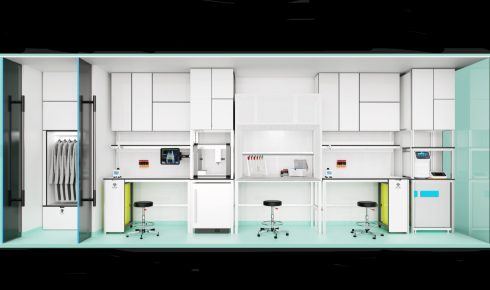 The steel labs can be placed close to the often remote locations where dives take place
The steel labs can be placed close to the often remote locations where dives take placeResidents of the boxy steel labs can be found working on fungi-based building materials, sustainable textiles, anti-tumour biotherapeutics, green fuel technology, digital health products and many other exciting bioscience research projects that are not yet at the stage where they have capital for purpose-built premises.
The labs in Tenerife could be the first of many that travel to support far-flung environmental projects, says Steiner. As well as the convenience of getting labs close to the often remote and challenging locations where samples are taken, groups of researchers on international missions can often struggle to secure good access to benches in local laboratories or university departments, explains Steiner.
“One of the reasons we wanted to work with Ocean Census was that they want to build a toolkit that can be adapted by other people, and we were always very keen on open-source or blueprint-sharing. It’s really not just limited to this one project, it’s about almost building a toolkit that can be used then in a wider context.”
Steiner hopes it might also inspire others to try to repurpose equipment, infrastructure and even the workforce that was hastily put together to track and fight COVID-19 throughout the pandemic years.
“We [the UK] put all the money and the effort in, you know, and it’s all just sitting there now. I hope this provides a great example to inspire people. There’s actually so many uses for this kind of lab infrastructure that you can see not only for healthcare, not only for the ocean, but also for any other molecular biology projects.”
To find out more visit opencell.bio and oceancensus.org
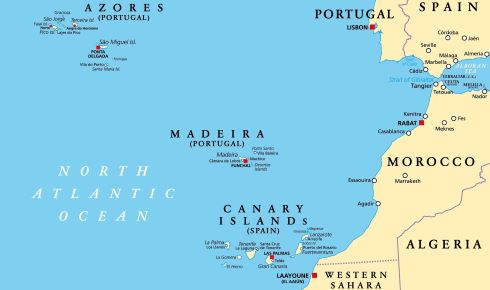 Exploring Macaronesia
Exploring MacaronesiaMacaronesia straddles the equator in the eastern-central Atlantic, encompassing a range of volcanic archipelagos stretching from the Azores to Cabo Verde. The most northern three, from the Azores to the Canary Islands, form a unique bioregion with extraordinarily high levels of terrestrial and marine species diversity and endemism. It is believed the Macaronesian region’s 31 islands have never been connected to mainland Europe or Africa, making it an important site for testing biogeographic and evolutionary theories.
Tom Ireland MRSB is editor of The Biologist.


